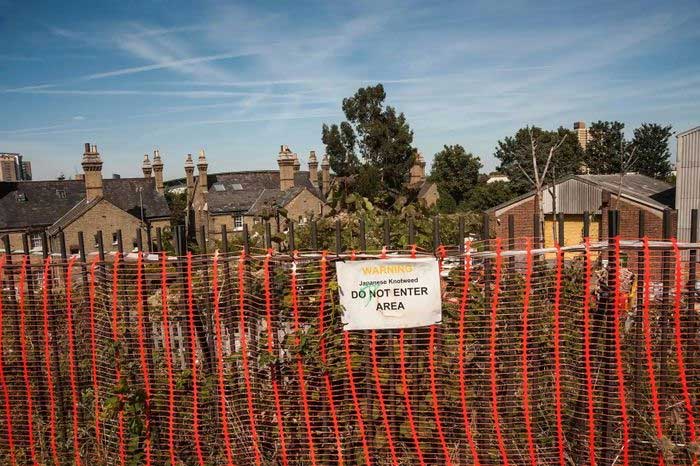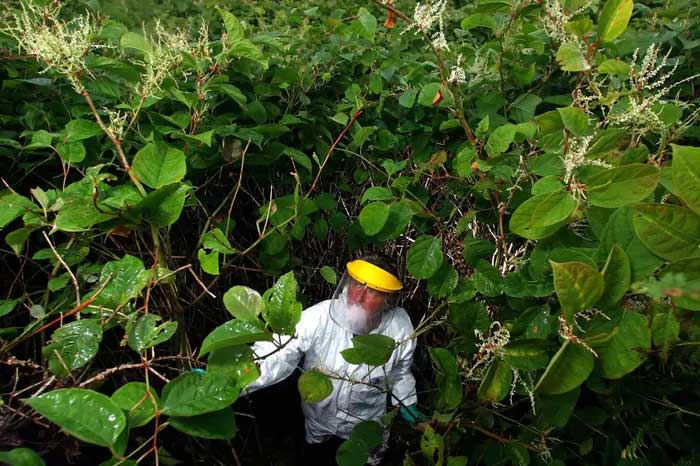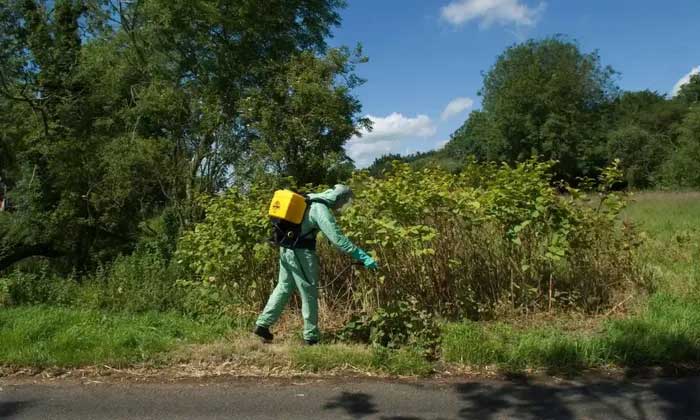The Japanese knotweed is becoming a threat to the native ecosystem in the UK, causing property owners billions of dollars in damages.
In 2014, Paul Ryb purchased a house in Highgate, London, unaware of the imminent danger. In the spring of 2015, gardeners discovered patches of Japanese knotweed threatening the entire ecosystem of the garden. Ryb had to hire workers to dig up the entire garden to remove the invasive species, costing over $12,000.
Subsequently, the homeowner sued the previous inspector who helped him assess the property. In 2019, the court ruled in favor of Ryb, awarding him $60,000 in compensation, according to the Guardian.
Invasive Species Threat
Japanese knotweed originated in Japan but has spread across Europe and North America, becoming dominant in various habitats. It grows rapidly, reaching heights of up to 2.5 meters in just one month and covering large areas.
In London, many areas selected for the 2012 Olympic Games have been invaded by knotweed. Authorities have spent tens of millions of dollars dealing with this plant.
Knotweed is extremely difficult to eradicate; even when uprooted or defoliated, it can survive even if molten lava flows over it. In the UK, properties affected by knotweed have seen a total value loss of up to $25 billion.


The Japanese knotweed is a concern for the native ecosystem in the UK. (Photo: Guardian).
The spread of this invasive plant from Japan has caught the attention of the UK Parliament, prompting the formation of several committees to find ways to address knotweed. However, no viable solutions have been found to date.
Gethin Bowes, an environmental expert, stated that the roots act as a “battery” that sustains the life of the knotweed. Even if the above-ground portion is scraped clean or destroyed by herbicides, the deep-rooted system can lie dormant for up to 20 years before regrowing, making knotweed a persistent threat.
When the roots lie dormant underground, external stimuli can trigger them to develop and sprout new plants. Even a small piece of root can grow into a complete plant.
To eradicate knotweed, all remnants of the root system must be removed from the ground. In the UK, some property inspection experts have to use trained dogs to sniff out the roots of knotweed.
The plant from Japan poses challenges for large construction projects. It appears almost everywhere, from riverbanks and roadsides to parking lots and private gardens. Even in areas that have been treated, knotweed can reemerge and infiltrate the structures within buildings.
Extremely Difficult to Eradicate
Japanese knotweed has been present in the UK since 1850 through commercial activities. At that time, foreign plants were not viewed as invasive species as they are today. In fact, knotweed was appreciated for its stable growth and aesthetic appeal.
However, by the early 20th century, the plant from Japan began to thrive in the wild and spread throughout the UK. Efforts to control the proliferation of knotweed have generally been ineffective. The Japanese plant, along with other invasive species, began to replace native plants.
The impacts of knotweed proliferation were not widely recognized until they affected property values. The presence of this plant can significantly decrease property values, even causing banks to refuse to lend for home purchases.

The most effective way to kill knotweed is by using herbicides. (Photo: Guardian).
In 2012, the Royal Institution of Chartered Surveyors in the UK established regulations stating that the presence of knotweed within a 7-meter radius poses a threat to property values, impacting millions of homes. Nevertheless, authorities have not found an effective solution to address the issue.
Knotweed has a robust vitality that surpasses its competitors, inhibiting the growth of smaller plants due to a chemical within its leaf structure. While it cannot penetrate reinforced concrete or erode the foundations of buildings, knotweed can push through cracks.
The plant from Japan also exhibits seasonal changes. It sheds leaves in winter and flourishes in summer. The leaves of knotweed are heart-shaped, with creamy flowers.
Weed control workers often use glyphosate to eradicate knotweed, a widely used herbicide. Although glyphosate has raised public health concerns, expert Gethin Bowes believes it is the most effective option for controlling knotweed.
While acknowledging health concerns related to glyphosate, Bowes argues that allowing this plant to proliferate unchecked would have even worse impacts on the environment and biodiversity.
Dr. Dan Jones, a biologist, has been experimenting with knotweed control since 2011. Jones runs a consultancy company focused on invasive species called Advanced Invasives. In a field spanning dozens of square kilometers in Cardiff, Advanced Invasives has tested various methods to eliminate knotweed.
Jones stated that mowing the above-ground part only exacerbates the problem. Research published in 2018 by Jones indicated that the most effective method is to apply glyphosate in the fall for several consecutive years.
However, even if the above-ground layer is completely eradicated, the knotweed roots remain deeply embedded in the ground, making total eradication of this plant impossible. To completely eliminate it, one would have to dig it out completely and remove all layers of soil, but this method is very costly.


















































